In today’s fast-paced world, security systems play a vital role in protecting our homes and businesses. However, there are instances where you might find yourself needing to disarm an alarm system, but the code is nowhere to be found.
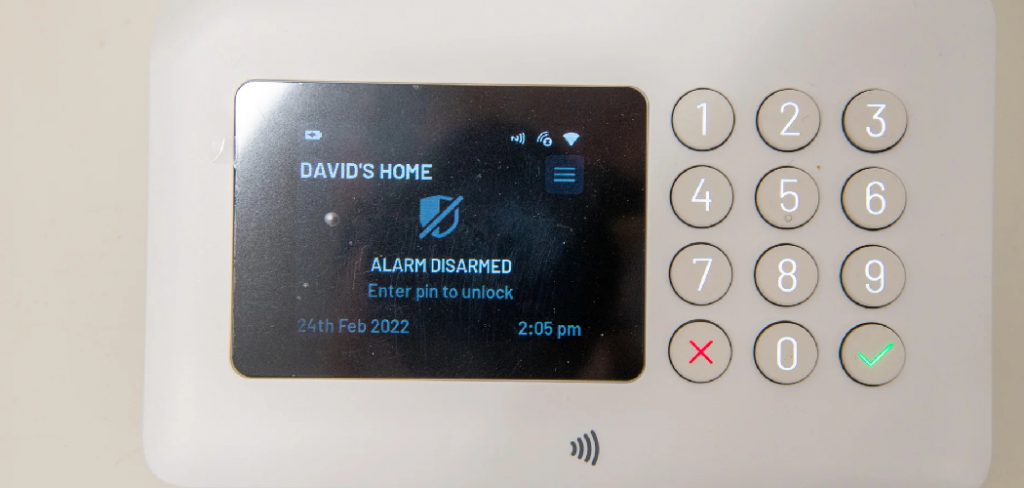
Whether you’ve recently moved into a new property with an existing system or you’ve simply forgotten your code, knowing how to disarm an alarm system without code can save you from a potential headache. This article aims to provide you with practical steps and tips to safely and effectively tackle this situation without compromising the security of your premises.
Understanding the Situation
In various unforeseen circumstances, individuals may find themselves in dire need of discovering how to disarm an alarm system without code. Scenarios such as losing the security code, a system malfunction, or inheriting a property equipped with an alarm system for which no code was provided. In these present real-world situations, this knowledge becomes crucial. For homeowners and property managers, it’s not just about convenience; it’s often a matter of safety and security.
Disarming an alarm without a code might also be necessary during emergencies when quick access is needed and the code is not readily available or forgotten. Therefore, knowing alternative methods to disarm your alarm system becomes an invaluable part of managing and maintaining the safety protocols of your living or workspaces.
It ensures that in any unexpected situation, you can effectively control the security system, minimize potential disruptions, and maintain the safety of the premises and its occupants.
How to Disarm an Alarm System without Code: Physical Key Override
Among the various methods to disarm an alarm without the code, the physical key override feature stands out due to its simplicity and reliability. This feature is integrated into many alarm systems as a fail-safe mechanism, allowing the system to be deactivated in situations where digital codes cannot be used. Essentially, the physical key override offers an analog solution in a digital world, embodying the principle of having a backup plan for your security system.
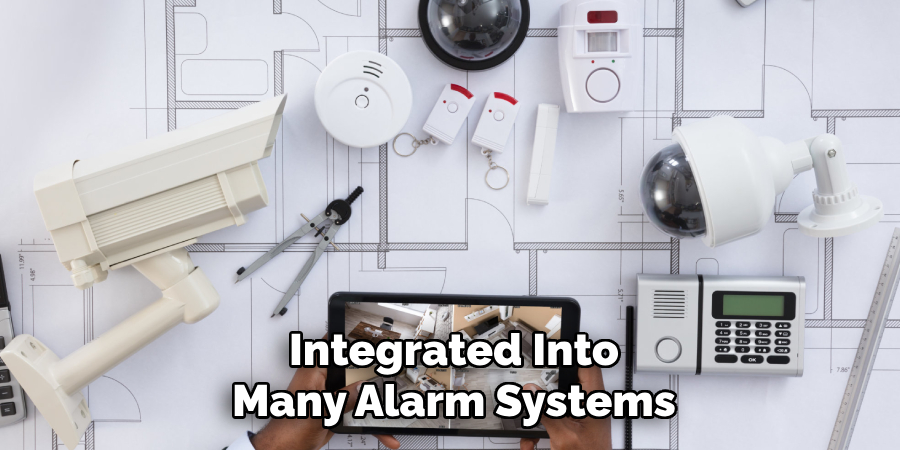
To utilize this feature, follow this step-by-step guide:
- Identify if Your System Has a Key Override: The first step is to determine whether your alarm system is equipped with a physical key override. This information can usually be found in the user manual or by contacting the manufacturer. Look for a key slot on the alarm system’s panel or nearby it.
- Locate the Physical Key: Upon confirming that your system has a key override feature, locate the physical key. In most cases, the key is handed over during the installation process. If you cannot find it, contact the manufacturer or the installation company to obtain a replacement.
- Access the Key Slot: The key slot is typically concealed to prevent tampering. Carefully remove any panel or cover that hides the key slot, using the appropriate tools if necessary. Be sure to follow the manufacturer’s instructions to avoid damaging the system.
- Disarm the Alarm: Insert the key into the slot and turn it as directed—usually clockwise or counter-clockwise—to the disarm position. The alarm system should emit a signal or display an indicator confirming that it is now disarmed.
- Secure the System: After successfully disarming the alarm, ensure that any panels or covers are returned to their original position to protect the integrity of the system. Keep the physical key in a secure but accessible location for future use.
Remember, while the physical key override is a convenient feature, it’s essential to use it responsibly and only in situations where disarming the alarm without the code is necessary. Always keep the physical key safe and inform all relevant parties about its location and the procedures for its use to ensure the security of your property.
How to Disarm an Alarm System without Code: Contacting the Alarm Company

In the quest to understand how to disarm an alarm system without code, directly reaching out to your alarm company can prove to be an effective strategy. Having the contact details of your alarm company readily accessible is crucial, not only for emergency situations where you need to disarm the system without a code but also for general support and maintenance.
This proactive approach ensures that you can quickly resolve any issues with your alarm system, minimizing security risks and potential disruptions to your safety protocols.
To proceed with contacting the alarm company, follow these guidelines:
- Have Your Information Ready: Before you call, make sure you have all the necessary information at hand. This includes your account number, the address where the alarm system is installed, and a possible identification number of the alarm system itself. This will expedite the support process and ensure efficient assistance.
- Explain the Situation Clearly: Once connected with customer support, clearly and concisely explain your situation. Whether it’s a lost code, system malfunction, or any other reason why you need to disarm the alarm without a code, providing clear details will help the support team understand your predicament and offer a tailored solution.
- Follow Instructions: The alarm company’s support team may provide you with specific instructions on disarming the system. This could include verification steps to confirm your identity and ownership of the system or technical steps to manually disarm the alarm. It’s imperative to follow these instructions precisely to ensure the security and functionality of your alarm system.
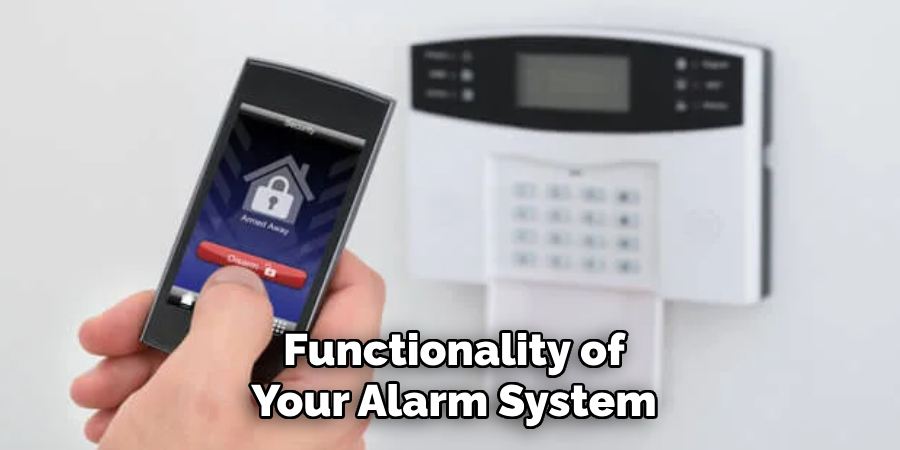
By maintaining open lines of communication with your alarm company and following their guidance, you can effectively manage and disarm your alarm system without the code, ensuring the safety and security of your premises.
Using Default Manufacturer Codes
Default manufacturer codes are preset alarm codes that come with the alarm system upon purchase. These codes are designed to provide initial access to the alarm system before the installation process allows the owner to set a personalized code.
They serve as a universal key for technicians and users to perform setup, maintenance, or emergency access when personal codes are forgotten or unavailable. However, relying on them permanently can be a security risk, as these codes are often common knowledge among experienced burglars.
To use default manufacturer codes to disarm your alarm system, follow these steps:
- Locate the Default Code: First, you need to find the default manufacturer code for your alarm system. This information can usually be found in the alarm system’s user manual or on the manufacturer’s website. If the manual is lost, consider contacting the manufacturer’s customer service directly, providing them with the model and serial number of your system.
- Enter the Default Code: Once you have located the default code, enter it into the alarm system keypad. Like personal codes, default codes typically require pressing an “Enter” or “Disarm” button afterward to initiate the command.
- Change the Default Code: It is crucial to change the default manufacturer code as soon as possible for security reasons. After disarming the alarm with the default code, access the system’s settings to create and confirm a new, unique code. This helps ensure that your alarm system is safeguarded against unauthorized access.
- Test the New Code: After setting a new code, test it to ensure it effectively arms and disarms the system. This step verifies that the change was successful and that you have full control over your alarm system.
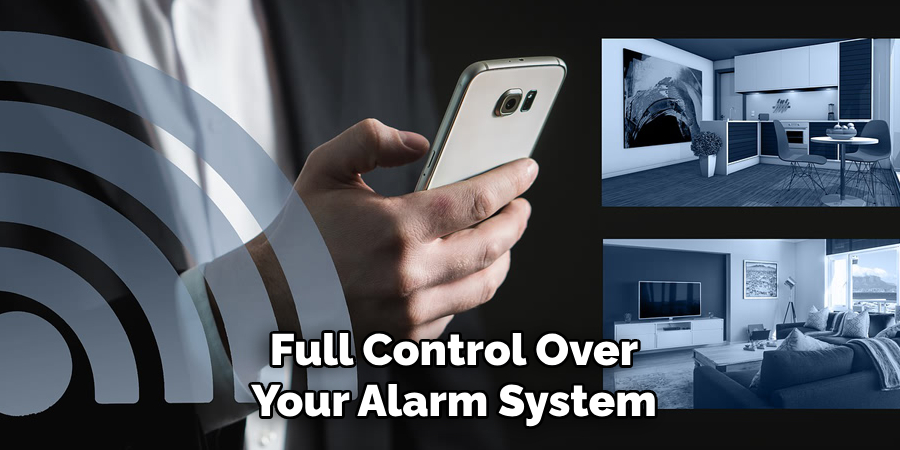
Utilizing default manufacturer codes can be a quick solution for situations where the personal code is forgotten. However, always remember to treat these default codes as temporary access points and replace them with secure, unique codes promptly. This practice ensures that your property remains protected, maintaining the integrity and reliability of your security system.
Assessing the Alarm System
Understanding the type and model of your alarm system is crucial for effective management and troubleshooting. This knowledge not only aids in performing routine checks but also ensures you are prepared to address any issues, including disarming the system without the code.
Different alarm systems come with varied features, capabilities, and methods for disarmament, making it essential to familiarize yourself with the specifics of your system.
To start, thoroughly read through the user manual provided by the manufacturer. This document is a goldmine of information, outlining not only the features of your alarm system but also step-by-step instructions for its operation, including alternate disarmament methods.
Most manufacturers offer digital copies on their websites if the manual is not readily available. Additionally, many companies provide online tutorials or customer support services to help you understand your system better.
Familiarizing yourself with your alarm system allows you to effectively utilize all its features, enhancing the security of your premises. It also prepares you to act swiftly and efficiently in emergencies, ensuring that you can disarm the system when necessary, even without the code. Understanding your system’s type and model is the first step toward achieving a secure and manageable alarm setup.
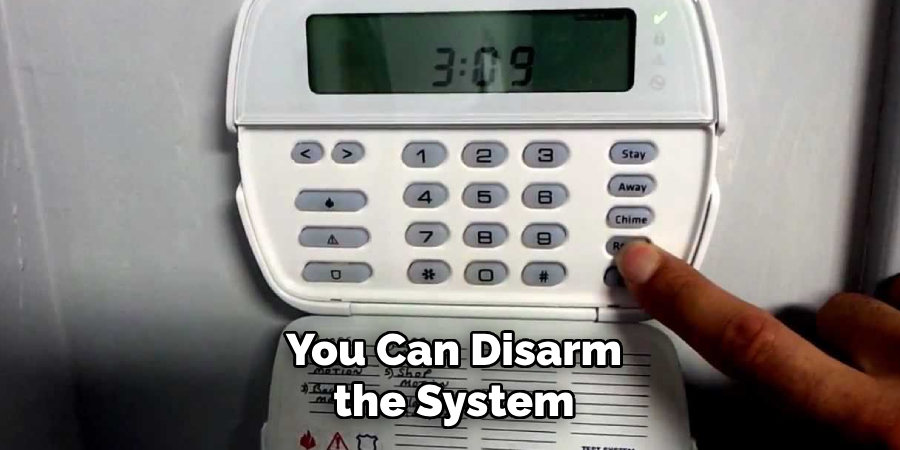
Maintaining Emergency Procedures
Practicing emergency procedures with household members is an essential aspect of home safety. Regular drills ensure everyone is well-informed about what to do in various emergencies, including situations where disarming the alarm system without a code becomes necessary.
Creating a detailed emergency plan involves identifying different scenarios—fires, break-ins, medical emergencies—and outlining clear steps for each, including alternate exits and safe meeting points outside the home. Rehearsing these plans quarterly allows everyone to familiarize themselves with the steps, reducing panic and confusion during actual emergencies.
For the alarm system, make sure all members know alternative methods of disarmament, such as using the system’s app or contacting the alarm company directly. Incorporate the use of emergency safe words or phrases that signify the need to disarm the system. Remember, the goal is to ensure swift, calm responses that enhance safety and security for all household members.
5 Common Mistakes When Disarming an Alarm System Without Code
Home security is a high priority for many, and for those with alarm systems, a secure feeling can be as simple as punching in a four-digit code. But what happens when you’re faced with disarming your system without your trusty code in hand? It’s a scenario that alarms many homeowners quite literally.
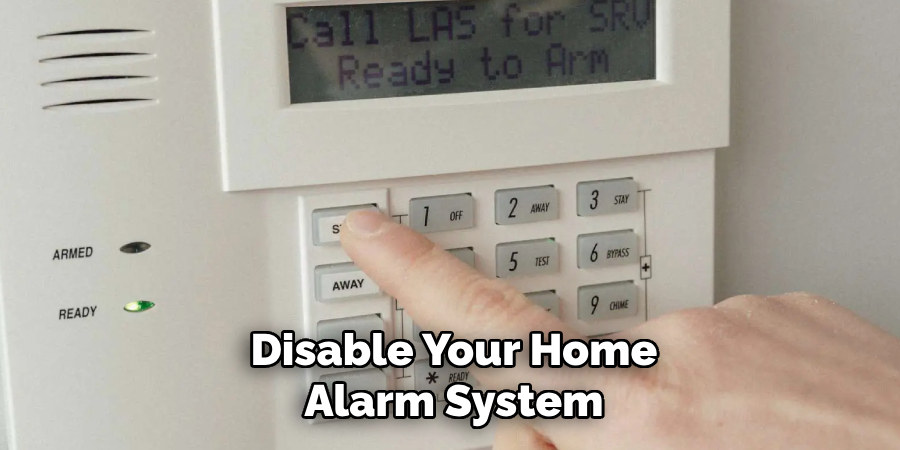
In a panic, people often make mistakes that can lead to complications or, worse, a failure to disarm the system altogether. Here are the five most common errors to avoid when you’re trying to disable your home alarm system without the access code.
1. Lack of Knowledge of Your System
Know Your System Inside and Out
The first mistake is potentially the most fundamental—a lack of knowledge about your alarm system. Many people purchase homes with existing alarm systems and fail to truly understand how they work.
Different systems have varying methods to disarm them, and not knowing the specific model you have can lead to significant issues, including a triggered alarm. It is essential to find out the make and model of your system as well as any unique functionalities it may possess. This information is usually found on the keypad or within the user manual.
Getting to Know Your Alarm:
- Locate the alarm panel and all keypads.
- If available, check the user manual for system details.
- Identify all sensors and learn their locations.
Why This Is Important
Understanding your alarm system is the first step in effective home security. If you’re unfamiliar with the control panel and the devices it interacts with, you won’t be prepared to disarm it properly. The more you know about your system, the more confidently you can deal with any issues that arise without accidentally setting it off.
2. Ignoring the User Manual
The Manual Is Your Map
User manuals often sit untouched, gathering dust in a drawer or in a corner, but particularly in the case of alarms, they’re invaluable. It’s a stark error to bypass this well of information when attempting to disarm a system without a code. The manual is a comprehensive guide, not only for setting up and using your alarm but also for those nail-biting moments when you’re pressed to disarm it without your usual access.

Making the Manual Your Ally:
- If you don’t have the user manual, search online using the model number.
- Familiarize yourself with the troubleshooting sections.
- Ensure you have a physical and digital copy for easy access.
Why This Is Important
Ignoring the manual means missing out on tailored advice for your specific system. Manuals not only explain how to disarm the system but also provide steps for dealing with various alarm situations and setting user codes. Don’t overlook this lifeline; it can save you a world of trouble in the event of a false alarm or technical issue.
3. Incorrect Entry Attempts
Patient Input, Prudent Exit
When the pressure is on, people sometimes enter random codes into the keypad in hopes of disarming the system. Unfortunately, this hasty behavior can lead to trigger-happy alarms. It’s crucial to remain calm and make methodical attempts at entering possible codes, especially if you’ve previously used the system and can recall portions or variants of the correct code.
Safely Attempting to Disarm:
- Remind yourself to slow down and think.
- As possible codes, use birth dates, phone numbers, or other easily remembered combinations that you may have used in the past.
- If the system has an entry delay, you have a typically short window to disarm before the alarm sounds.
Why This Is Important
Rapid-fire attempts at disarming, while well-intentioned, can be counterproductive. Most alarm systems have built-in delays that give you a chance to disarm them properly. Repeated failed attempts could lock you out, forcing the system to revert to a potentially louder and more persistent alarm mode.
4. Bypassing Sensors
Not-So-Smart Disablement
In the heat of the moment, it might seem smart to simply remove the sensors triggering the alarm, but in reality, it can make things worse. Those sensors are there to detect unauthorized entry or unusual movement, and disabling them could not only lead to a present issue (such as an alarm sounding) but also compromise your security going forward.
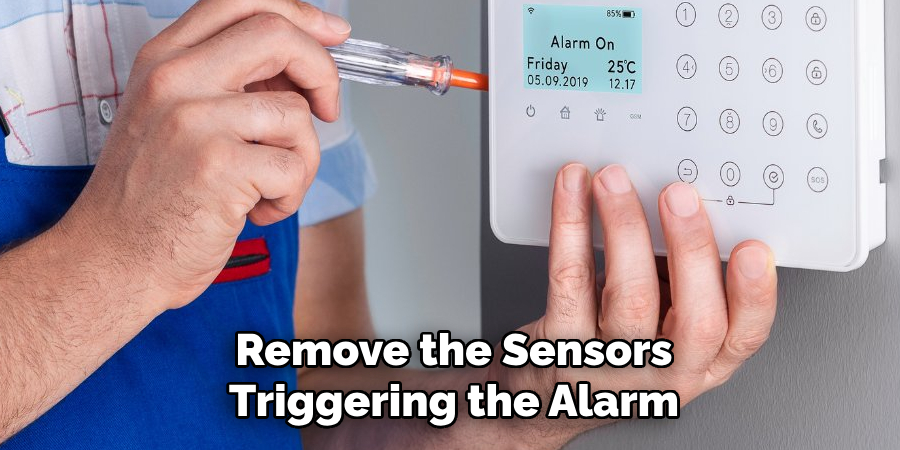
Handling Sensors with Care:
- Understand that sensors are strategically placed to detect specific activities and are typically located in or near entry points.
- Be cautious of opening or closing doors or windows where sensors are located. The system often allows a window for disarming once you open the main entry door.
- If you must disable sensors, do so knowing that you’re compromising that area’s security, and this should be rectified immediately.
Why This Is Important
Sensors provide crucial feedback about the status of your home’s security. Disabling them can leave you blind to potential threats and, ironically, can create a home security concern when trying to alleviate a perceived breach.
5. Not Contacting Professionals
The Expertise Protocol
One of the biggest missteps homeowners make is not seeking help from the professionals. Whether it’s customer support from your alarm provider or a dedicated security technician, these resources exist to help you in exactly this kind of situation. Trying to handle a tricky alarm issue on your own—especially when flustered or under time pressure—might just compound the problem.
When to Phone for Help:
- If multiple attempts to disarm fail.
- The alarm has been triggered and now sounds.
- You’re locked out of the system, or it’s completely non-responsive.
Why This Is Important
Alarm professionals have the experience and training to handle myriad scenarios. They can guide you through the disarming process step by step, aid in troubleshooting, and even offer dispatch services if necessary. By availing yourself of their expertise, you ensure that your home and your nerves are in the best possible hands during a potentially alarming event.
By being aware of these common mishaps and vigilant about avoiding them, you’re taking important steps toward home security mastery. Remember, the key to successful disarming is information, patience, and, if needed, professional help.
Final Thoughts
Understanding how to disarm an alarm system without code is more than a convenience; it is a fundamental aspect of maintaining the safety and security of your home or business. This knowledge becomes invaluable in unexpected situations where normal access methods are compromised.
Therefore, it is strongly encouraged for individuals to not only familiarize themselves with their specific alarm systems but also to proactively engage in preparing for emergencies. By taking these steps, you ensure that you and your loved ones or colleagues can respond swiftly and effectively, safeguarding everyone’s well-being and peace of mind.
About
Safety Fic is a distinguished figure in the world of Diy design, with a decade of expertise creating innovative and sustainable Diy solutions. His professional focus lies in merging traditional craftsmanship with modern manufacturing techniques, fostering designs that are both practical and environmentally conscious. As the author of diy, Safety Fic delves into the art and science of Safety Fic-making, inspiring artisans and industry professionals alike.
Education RMIT University
(Melbourne, Australia) Associate Degree in Design (Safety Fic) Focus on sustainable design, industry-driven projects, and practical craftsmanship. Gained hands-on experience with traditional and digital manufacturing tools, such as CAD and CNC software.
Nottingham Trent University
(United Kingdom) Bachelor’s in diyfastly.com and Product Design (Honors) Specialized in product design with a focus on blending creativity with production techniques. Participated in industry projects, working with companies like John Lewis and Vitsoe to gain real-world insights.
Publications and Impact
In diy, Safety Fic his insights on indoor design processes, materials, and strategies for efficient production. His writing bridges the gap between artisan knowledge and modern industry needs, making it a must-read for both budding designers and seasoned professionals.
